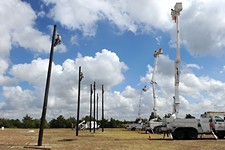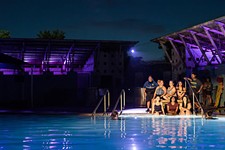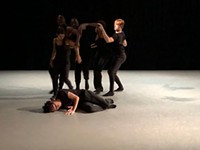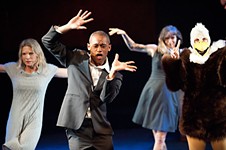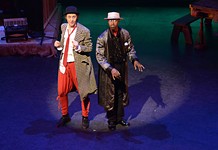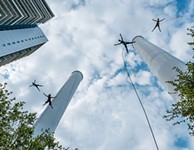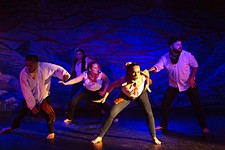Forklift Danceworks: You'll Know It When You See It
You'll know it when you see it
Reviewed by Jonelle Seitz, Fri., Feb. 12, 2010

Have you ever discovered rhythm or pattern during a mundane task and had the fleeting feeling that you were dancing? For Forklift Danceworks' next project, Artistic Director Allison Orr invited five choreographers to join her in molding everyday movement into dance – in exploring dance by way of nondance.
Choreographer Zenobia Taylor recruited waitstaff and cooks for her piece, an exploration of the movements characteristic of restaurant workers. (And yes, there are knives involved.) Caroline Sutton Clark drew from her experience receiving a blissful four-hands massage to create a work for 11 massage therapists. (One studio exercise: "Imagine the room is a giant leg, and you all have to work on it.") Orr choreographed a solo for Austin Police Officer Melissa McGrath, who directs traffic near the Four Seasons, and Sharon Marroquín is working for the second time with Frank Yezer, a septuagenarian and former ballet dancer. Ann Berman's work uses dancers, but also remote-control bunnies, and is inspired by the most ungraceful of historical figures: Mary Toft, the 18th century woman who convinced doctors she gave birth to rabbits (also, in a wild coincidence, the subject of C. Denby Swanson's A Brief Narrative of an Extraordinary Birth of Rabbits, opening this same weekend). Mari Akita created a solo for a single dancer using pedestrian movement. "I have to tell my dancer not to dance," she says.
For Orr, whose last Forklift endeavor was the wildly successful The Trash Project, Project Forklift! is a way of continuing to confront common perceptions of contemporary dance. "What interests me is making dances that, and this might sound kind of hokey, but I think connect to our humanness, that aren't just about movement exclusively."
But, I asked the group, how does that humanness become something we call contemporary dance? When does everyday movement become dance?
Mari Akita: Maybe context and designing it, I guess? Putting it all together.
Sharon Marroquín: And it's what you were saying earlier: telling them to do this now and hat then.
Akita: Yeah. Like when you see a flock of birds, there's always a pattern. It's not a dance performance, but you know, you kind of find it. Like, OK, cool, cool, cool. So you find something, that kind of pattern, but change the timing and arrange it.
Ann Berman: It's the artistic intent that makes it art. I feel like it's like a sculptor who uses found objects.
Marroquín: And it's not put together any which way, even though it's any kind of thing. It's put together in a very purposeful way, to shine light on some thing or other.
Zenobia Taylor: Unless the purposefulness of it is to make it random.
Marroquín: That's a purpose.
Taylor: Yeah, it's the intent behind it, to express something, or to express the fact that you're not trying to express something concrete.
Caroline Sutton Clark: I would love to share with you something. I took a grad seminar, and we talked about the definition of dance for months. We had to do like a final summation paper, and I kind of had had it with the whole thing by then. And so this was my final summation, to paraphrase a famous judge: "Dance is like pornography. I can't define it, but I know it when I see it."
Project Forklift! runs Feb. 12–21, Fridays and Saturdays, 8pm; Sunday, Feb. 21, 2pm, at the Off Center, 2211-A Hidalgo. For more information, visit www.forkliftdanceworks.org.





